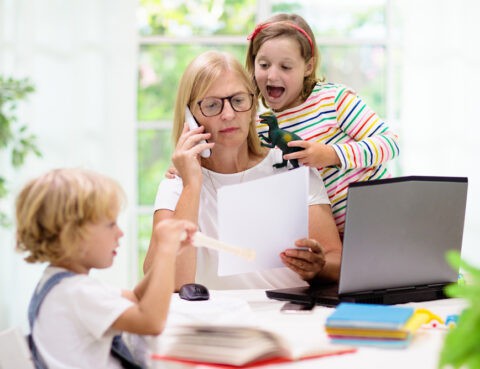

There is a plethora of advice these days emerging on HOW to turn one’s home into a school. The underlying assumption is that it is indeed in a child’s best interest for this to happen. In many cases this could be true. For some children the cost could be too much.
The most important reason for thinking twice before turning home into school is that they would lose their sense of feeling at home with their family. Every child needs a home – that is, a relational place of safety, rest and invitation where their acceptance and value is not based on their achievements. It is true that not every child has this kind of home, but if they do, we would not want to spoil that. And if they don’t, providing that kind of home should be our first priority. Even if the parent could somehow manage to multi-task, it doesn’t mean that the child can still find the mother or father they need once the parent has turned into a teacher. Certainly this was true for one of our own children when we attempted to school him at home while we were on a family sabbatical overseas. This six year old was quite succinct about the impossibility of what we were trying to do. As he exclaimed to his mother at one point: “You can’t be my teacher. You’re my mother!”. In our case, his mother was a professional teacher and quite capable of the multi-tasking required in serving a dual role. But the reality for our son was that his relational home with his mother was threatened when learning became the agenda.
There are a number of ways in which school can threaten a child’s sense of home with family. To start with, going to school typically involves separating from parents. If a child’s sense of home with their family has not matured to where they can preserve a sense of connection when apart from them, this separation will evoke powerful emotions of frustration, alarm and pursuit. These emotions underlie most problem behaviour, straining the very relationships the child depends upon.
In addition, when children lose their sense of home with their family, they are compelled to find another home to substitute for what they have lost. Many children end up replacing their family with fellow students at school. Unfortunately schools have become unwitting factories of peer orientation, pulling children out of orbit from the parents who are meant to be their answers, and into orbit around other children who cannot possibly take care of them. As evidence of this dynamic, you will find that most children today go to school not to learn about their world but rather to be with their friends. In other words, they feel more at home with each other than with their own family. This loss of feeling at home with their family has devastating effects on their emotions, their development, their learning and even on society as a whole. The topic is so huge I wrote a book on it and still only scratched the surface of this phenomenon.
These downsides to institutional learning can sometimes be reversed by educating children at home but the threat to a child’s sense of home with family can still remain if the child’s schooling becomes the top priority for these parents. During my professional career, I sometimes found myself recommending to parents that the emotional and behavioural problems they were facing with their child might be mitigated by taking the child out of school, at least for a while. Sometimes the results were stunning and rather immediate. Occasionally, however, this arrangement backfired. It seemed to me that one of the primary reasons for the failure of home education as a prescription was when the child somehow lost the parent they needed in the process of that parent taking on the role of teacher.
We have a rather unique opportunity during this unprecedented crisis to actually get our priorities straight – home over school. Many children will need to be reclaimed and parents could well use the time to restore their rightful place in their children’s lives. This is not necessarily an easy task but nothing will work right for the child or for us as parents unless our children truly feel at home with us and can find in us the emotional rest and fulfilling love they need. Since we have them at home and we are being called to stay at home, what could be more important than cultivating their sense of home with us? This is infinitely more important emotionally and developmentally than figuring out how to turn our home into a school.
When we see what a child truly needs developmentally in order to learn and to grow, it helps us know where to put our focus. As a theorist, my life’s work has largely been devoted to putting the puzzle pieces together about what children require for emotional health and well-being, including the realization of their full human potential.
In short, when distilled to the essence , the irreducible needs of a child are:
a) right relationships with the adults responsible for the child
b) a soft heart where a child can feel tender emotions
c) sufficient rest emotionally and from the work of attachment
d) true play where the engagement is in the activity rather than the outcome
These are the key factors in healthy development regardless of race, religion, gender, culture or society. This was true for our ancient ancestors and will be still be true for our descendants far into the future. When these conditions exist for a child, growth happens, potential unfolds, individuality emerges, curiosity appears. In other words, if the conditions are conducive, Nature can take it from there.
The critical question is: where are these four conditions more likely to exist for a child – in a good school or in a good home? Unfortunately, we all know homes where these conditions are missing, with tragic results for the children involved. In these cases, school is certainly the better bet. But the tragedy in today’s society is that parents in fully functioning homes are believing more in what school has to offer than in what they themselves have to offer their children. They have lost confidence in themselves as being the answer to what children need most.
Unfortunately, even the best schools in the world are not set up for providing these prerequisite conditions for children. Many schools are much better now that they used to be, but these four essential factors are rarely on the agenda in any shape or form, at least not systematically. My work with schools has largely been devoted to helping educators understand and foster these conditions in schools. There is no doubt that schools can greatly increase their effectiveness when they start acting more as a home in this regard. But the same could not be said in reverse. Homes do not increase their effectiveness by acting more as a school.
Back to the pandemic at hand. There is this idea that has taken root in our society that school is the most important factor in learning, if not development itself. The show must go on, we are told. In this context, I wish to remind parents who feel pushed to become teachers or at least teacher’s assistants, that there is no more important role than being a child’s home. Whatever you do, don’t mess with this. And when things become too much, what needs to be sacrificed is anything and everything that could interfere with serving this role for a child. There is a bottom line – something to be believed in when adversity prevails. That bottom line is home – not school.
To summarize, it is not the interruption in schooling that should be our primary concern at this time. What we need to remember is that when school comes home, we must take care that it is not at the cost of the home a child needs. For many children and families, a break from school might be the best thing to come out of this pandemic.
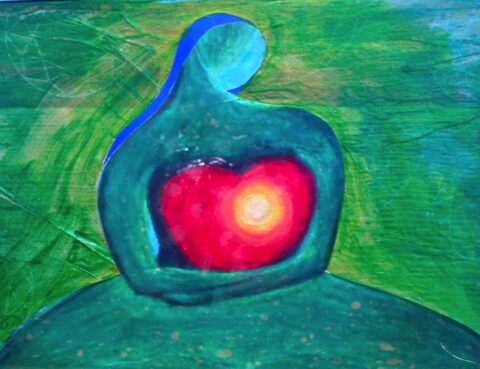
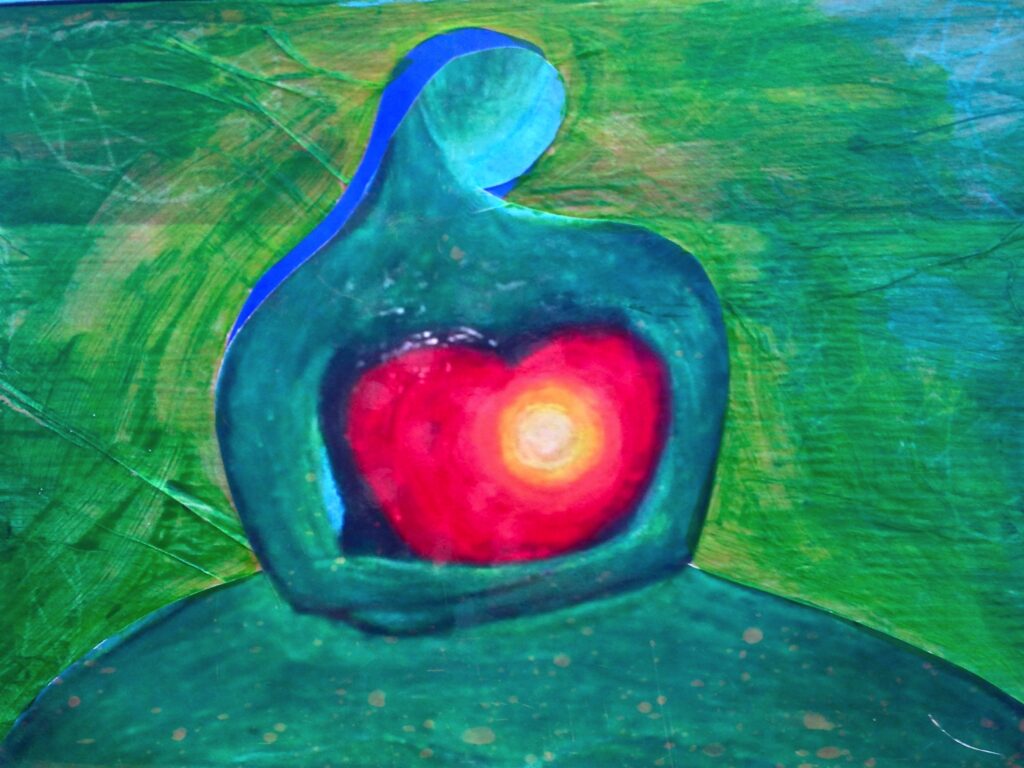
I’d like to share a few thoughts on taking care of children in alarming times. These are not new ideas by any means, more like reminders for those who are familiar with the attachment-based developmental approach. I’ll try to keep it brief as alarm has a way of shortening our attention spans.
But first, some comments on the nature of the stress we are experiencing during this crisis. It is only natural that in times of stress, we seek togetherness. This is how we are wired. But in this case, togetherness – at least in the form of ‘being with’ – is what threatens us, thus creating a perfect emotional storm. No wonder we feel so rattled and unsettled. We are meant to come together in order to take care of each other and our loved ones. Now we are asked to keep our distance to keep each other safe. As imperative as it is in these times, it goes against the grain of our instincts and that of our children. I can’t imagine what it is like for the spouses of hospitalized partners right now.
Given the conflict between what we feel like doing and what we need to do, there are two possible paths to appropriate action. For those capable of mixed feelings, the inner conflict becomes immense but also foundational to good problem-solving. For those not capable of mixed feelings – which include most young children and a disproportionate amount of adults – they are badly in need of well-spelled-out scripts*. These scripts become the main challenge of parents – translating an alarming world into easy-to-follow scripts that each particular child is capable of executing.
We must try to avoid alarming them in order to move them to caution. Alarming children directly is counterproductive on many levels, not the least of which is that it evokes deep insecurity and strong alpha impulses, both of which interfere with being able to keep them safe. Non-alarming scripts should be our modus operandus. Remember, scripts need to be simple, positive and do-able. Do make sure you engage the child before you provide and model the script, otherwise it can backfire, producing resistance or counterwill instead. So collect your child’s eyes, smiles and nods before proceeding.
Remember also, that one of the most important places of safety for children is being in the presence of a strong caring adult with a good alpha presence. No matter how scared we are and how little we know about what is happening or going to happen, we are still our child’s answer – including their bubble of safety in an alarming world.
Remember as well, that children at play are insulated from the alarming world around them. Play is a sanctuary of safety. Play is also the original school, far more effective anything society could possibly invent. Rather than try to make the home a school, it would be much more important in these times to make the home a true playground where Nature can take care of all of us. In true play, the engagement is in the activity, not the outcome. Most screen play does not qualify.
One more word of caution. Thwarted togetherness is the fountainhead of our frustration, so don’t be surprised if you find more attacking energy lurking just under the surface of your interaction. My foul frustration has certainly caught me unawares, sometimes erupting at the most unexpected times. In the interests of taking care of our children, we need to find safe emotional playgrounds for our frustration. We also need to make regular play-dates with our sadness as this is probably the only way to keep truly civil in these times. If you are a painter, you will need to paint. If you are a writer, you will need to write. If you gravitate to music as an emotional playground, remember you will need it more than ever at this time. Neglecting to grieve the unfolding tragedy, including uncertainty and mortality, will only set the stage for more wounding. We owe it to our loved ones to remain soft and gentle during this time.
*Scripts – the following excerpt on scripting is from Dr. Neufeld’s book Hold On To Your Kids.
To script a child’s behavior is to provide the cues for what to do and how to do it …. Successful scripting requires the adult to position himself as a cue-giver for the child. Again, we begin with the basics: we collect the child first in order to be able to work from within the relationship. It is very much like the mother goose with goslings; getting the offspring into line before bringing the behavior into line. Once a child is following us, we are free to take the lead. Of course, our ability to prescribe a child’s behavior will be only as good as the child’s attachment to us. It doesn’t have to be particularly deep or vulnerable, only strong enough to evoke the instincts to emulate and to imitate.
For successful directing, the cues for what to do and how to be must be given in ways the child can follow. It doesn’t work to give negative instructions because that does not actually tell the child what to do. In fact, for the immature and severely stuck, all that registers is often the action part of the command! The “don’t” is often deleted from awareness, leading to the opposite behavior of what was desired. Our focus must be diverted away from the behavior that causes trouble and focus on the actions that are desirable. Modeling the behavior you want the child to follow is even more effective. Like a director working with actors or a choreographer with dancers, the end result is created first in the adult’s mind.

Health is something we all desire for our children. Physical health is fairly straightforward to assess, as problems usually show up in terms of pain and discomfort. Emotional health, however, is a bit trickier to measure; how do we even know what to look for?
Consider this story from Tamara …
I had a weeping fig that was not thriving when it was transitioned from the nursery to my home; in fact, it wasn’t thriving in the nursery either, and so I knew there might be challenges. But I was excited about my new plant and I didn’t let the bit of wilting deter me. When it arrived, I placed it where I wanted it to be, so that I might enjoy its presence and it could keep me company while I worked. However, the fig plant was not so happy where it was. It let me know by shedding leaves – lots of them. At first I tried to change how much I watered it, but it didn’t make a difference. And so, I realized that something else must be going on. I moved it to a window, closer to the sun and to its tree relatives outside. It stopped shedding leaves within a day. I had found the right conditions! I had to deal with my own frustration and disappointment, as this was not my plan for where I wanted the fig, but it was what the fig plant needed. In this process, I had to adapt and be flexible — I had to read the signs. I was the gardener, the one tending the plant, and it was up to me to find the conditions that my plant needed to reach its potential, and do my part to help it get there.
With a plant, it seems obvious that when we see it struggling, we should try to change the conditions. Does it need more or less water? Does it have enough sun? Does it need extra care now because we were away for a few weeks? Is it a delicate plant that needs just the right situation to thrive?
The process is similar with children. Kids are not likely to shed leaves, but something in their behaviour can alert us to the fact that something is not right. Their behaviour is a little window in to their internal world, and we can use it as an indicator of emotional health. If we pay attention, our children’s behaviour shows us when something is not working for a child (of course it can also show us when something is working for a child). When we can find the conditions that work for a child, they have the opportunity to thrive in the same way as the weeping fig did.
In fact, we could even say that a child’s behaviour is a gift (though it might not always feel that way!) that provides us with valuable information that can be incredibly helpful to us, even when that behaviour is troubling. When we remember that a child’s behaviour is telling us something, it changes the dance. It helps us to explore what the child needs so that they can grow.
Just like the plant couldn’t be taught to hold on to its leaves, trying to teach a child a lesson or getting mad at a child whose behaviour is off, isn’t going to get to the root of the problem. In fact, it may even make things worse. Instead, what if we were to try and remember that, just like a plant, what we see on the outside is telling us something about what is happening on the inside?
But how do we know what they need?! Each person is unique of course, but we all share universal needs:
- We all need connection.
- We all need room to express ourselves.
- And we all need a safe space to feel our emotions.
In our experience, the most challenging behaviours in children stem from one of these needs not being met. If we start with these universal needs, we can explore what a child needs more or less of. All healthy emotional growth in children starts with a safe relationship with a caring adult, and providing them with a safe space to feel.
So how do we help our children find their feelings?
It starts with relationship. We, the adults in charge, need to help our kids find their feelings in the most human way possible. This starts with building positive relationships with the children we work with every day. Whether we are a parent, teacher, social worker, or a helping professional, research now clearly shows that a safe emotional connection with a caring adult is the best way to protect our children’s hearts. One strong, trusting relationship with a caring adult has the power to positively impact a child’s emotional health and well-being forever. When children feel deeply cared for, this supports them to develop their own caring feelings which makes them naturally more sensitive to the emotional needs of others.
This might sound incredibly simple, or even obvious. It might also sound “soft,” or “too easy” to be true. It is anything but that. Unfortunately, the ways that we deal with troubling child and youth behaviours today – through systems of rewards and punishment, or by trying to be “friends” with children and have them see us as their peers – are not helping. Sometimes they even exacerbate the problem, because they alienate us from the very children that we are trying to support.
Instead, we have to find our way back into relationships with the children in our care that make them feel safe with us, so they may be open to our guidance. We need to be their safe place, the place where they feel safe enough to let down the wall around their hearts. And once we do that, we have an opportunity to make meaningful change in their lives.
And, our feelings need to play. Just as important as building strong relationships with children is providing them with opportunities in which their feelings can come out to play. In other words, we need to provide them with emotional playgrounds. And in our experience, the most powerful emotional playgrounds of all are the arts – but not in the way that most of us think of them.
From the very beginning of time—as we drew on cave walls, danced around fires, shared stories, sang songs, and sculpted clay—adults and children alike have been expressing themselves through the arts. Cultures are created over time, holding the wisdom of what is needed to sustain the emotional health of individuals and communities. The fact that every traditional culture has developed rituals of singing, sharing stories, and dancing together is not a coincidence. These art forms have served as expressive outlets that bring people together to release what needs to be released and to share in the collective reflection of what it means to be human. Simply put, they bring us to our feelings, and to the feelings of one another. And these experiences are essential to healthy emotional development.
The profound impact of the arts on the emotional health and well-being of our children and broader communities is now coming back to our attention through a global paradigm shift. Where once the arts were seen as “extras” in curricula and community programs, researchers and experts in emotional health are beginning to understand the extraordinary power of the arts to awaken feeling, support emotional growth, and in doing so, connect us to one another. This might feel like a surprising revelation today – but if we consider historical cultural practices over thousands of years, we begin to see that artistic rituals and practices that have been woven into our lives are integral to healthy human development.
Human beings have a deep need to express what is inside of us so that we may become known and make visible to others our inner worlds. This expression helps us make sense of who we are and to bring us into the world of another. Artistic experiences are where we can truly feel our emotions in unparalleled ways. We listen to music that moves us, or watch great films that bring us catharsis. We share stories that take us on journeys of emotion —sadness, joy, loss, pain, and hope—offering glimpses into the experiences of others and of what it means to be fully human.
When artistic experiences are about process, rather than outcome, they can become playgrounds for our feelings. When we offer children opportunities for artistic expression in ways that are truly playful and that are held by the safety of our relationship – i.e. in ways that don’t make them feel pressure to create something “good” or “perfect,” but simply to be who they are and share that with us and others – we support their healthy emotional development. And when they feel connected to us through a strong relationship and we become their compass point, that is when these experiences will result in the most profound changes. The emotional health that emerges is the fruit of relationship and play – and as such, it is profound and long-lasting.
So, coming back to our wilted plant …
When we face challenging behaviours, we could start by just asking ourselves simple questions that can help us to discover what is needed.
- Does this child need more connection time?
- Do they feel special and important to at least one caring adult in their lives?
- Do they have the space needed to express and digest big emotions?
- Do they need more opportunity for expression and release through play?
- Do they have a safe space to feel their very tender feelings?
- Are their days structured so tightly that they don’t have enough quiet, gentle moments of nothingness in which their feelings can surface?
By asking questions like these, we draw closer to being able to create the conditions needed for our children’s emotional health and growth. We become gardeners at heart.
To be a gardener is to be curious about what a plant needs, to see what is working and what isn’t, and to attempt to provide for the needs as best as we can. We have both, in our own ways and in our own timing, found our way to becoming gardeners, with plants and with children.
Neither of us are perfect gardeners by any means. But what we do know and trust is that just like plants, every human being is born with huge potential and given the right conditions, will thrive. As caretakers of children’s hearts, we need to hold on to this knowledge, so that we don’t give up on those who are slower to grow or have experienced adverse conditions that have affected their development. Lasting change takes time.
A postscript from Hannah and Tamara:
Emotional health and well-being is the topic of the Twelfth Annual Vancouver Conference, taking place from April 16-18, 2020. Some of the many topics explored will be what emotional health looks like in our children, in our adolescents, in our marriages, in our schools.
We are quite excited about the new Pre-Conference Seminars on April 17th, where we will be spending a full day on emotional health in schools. This is an area we are both passionate about and have been exploring in depth for many years. Three other seminars will be offered at the same time: one on alarm problems, one on play and autism, and one on discipline.
For the complete conference program, details and registration, please visit our conference website. We hope to see you there!

Evening balcony time with my son was our time to have the “big” talks, and this cool autumn evening when my son was fourteen was no exception. As we spoke about some of his painful school experiences, I tried to empower him, to mirror to him the amazing person I think he is.
But then he told me his truth: “Mom, I just want to be normal! I just want to be like everyone else!”
I have to admit I felt shocked at the conviction in his voice. I had spent so much loving, playful energy into inviting his uniqueness throughout his life. Had I nonetheless failed him?
I remembered the time he first was able to verbalize to me what he was noticing about himself. He was almost five years old. This was before he had been diagnosed with Asperger’s, before we had an official name that would make it easier to explain to him, to others, some of what was “different” about him.
“Mom,” he said. “I am Dumbo.”
It broke my heart way back then. I had so wanted to spare him this feeling. Particularly because I knew what it felt like to be Dumbo.
I knew the pain of being rejected and ridiculed because I was different. As a younger child, I was the “fat” girl that got laughed at and chased around the school by the other kids. As I got older, I became more and more aware that my differentness did not stop at my body. I was too intense, too sensitive, too emotional, too inquisitive. Too much. Inside and out. It was very clear to a deep part of me that there was something very wrong with me. I did not belong. I was not wanted.
When I got older, I changed the one part of me that I could change – my weight – and made myself smaller.
WELL! The world opened to me – or so it seemed. At least on the outside, I was NORMAL!
It was a powerful experience – practically intoxicating! To finally be like everyone else!
And yet, there was always a nagging feeling, a sword of Damocles hanging above me. I knew deep down that this moment in time was somehow illusory, a Cinderella spell. As ferociously as I had worked for this gown of “normality,” I sensed that I couldn’t avoid the clock striking midnight. I knew I was as different as I had ever been. This “normal” body was not going to get me the love that I had been yearning for. In fact, it may even have been taking me farther from it.
The journey ahead was clear: it was ME who needed to embrace all that I am, embrace Dumbo (inside and out), stop pursuing “normality,” and give myself “the generous invitation” to be. This is, of course, the never-ending journey of the self for all of us. Funny how it always feels like a surprising discovery, time and time again.
When my son was born, I felt sure I was going to give him a jump-start on this journey to self-acceptance. I did all I could to playfully mirror, invite, and contain him. That way, from the start, HE would feel the confidence to be himself that I had lacked. Not just in terms of his hypersensitive (autistic) brain – there is more to him than just that – but in terms of all of who he is.
And so, there we sat on the balcony, with him telling me that all he wanted in the world was to be normal, to be like everyone else. I felt despair. But I did recover.
And we began a series of balcony conversations that lasted over the next couple of years about whether it would be better if everyone were the same. About whether being different is being inferior. About wanting to fit in. About not wanting to stand out.
We talked, we argued. And I realized that I had to make room for my son’s insistence that being normal, not being himself, was the way to go. “Normality” has a powerful gravitational pull. We are creatures of attachment. We are social animals. There is a part of us that says fitting in is the answer. So my son wasn’t wrong when he sensed that. I had sensed it, too, when, as a young adult, I brutally halved my body size in order to be “acceptable.”
But there is another equally powerful part of us that cries out when we “disfigure” ourselves in order to fit in. That cry is the stifling of a “barbaric yawp,” a phrase used by Walt Whitman in his famous poem “Song of Myself.” This barbaric yawp shouts, “I am!” It is an expression of a powerful, primal mandate of nature moving us to reach and become.
So here I found myself with my son, confronting a fundamental tension of human existence: Dumbo’s need to belong on the one side, and Whitman’s barbaric yawp on the other.
My son was hearing Dumbo’s lament loud and clear. But I realized I couldn’t MAKE him hear his barbaric yawp. I couldn’t talk him out of wanting to be normal, or even love him out of it. He had to write this song himself. This yawp had to grow in him. And as painful as it was for me to watch, I had to let him ache to be other than he is.
My son’s developmental journey in this respect is only just beginning. But the other day, years later, when we were having another one of our balcony discussions, I prodded him with a thought experiment: if a pill were created that would make your “autism” go away, would you take it?
He thought about this question for a while and then said with conviction, “No, I wouldn’t. My Asperger brain is a part of who I am, and I want to be me.”
My heart skipped a beat. Was that a barbaric yawp?
On the outside, I turned to him and nodded matter-of-factly. Inside, I fought the tears….
Jule Epp will facilitate a scheduled online class offering of Dr. Neufeld’s “Science of Emotion” course, starting January 31, 2020.
See Events page for more information.

We have so many pressures put on us – some by others, some self-inflicted – to do things “right”. Welcoming in another new year can sometimes feel this way, too. We make resolutions to eat better, to live better, to work out more. We create restrictions for ourselves and focus on outcomes. As a society, we are good at this. And we start young with our productive mindset.
I was one of those children who felt internal pressure to get things right. My years as an artist were short-lived. By age 6, after a year at school, I figured out that there was a “right” (and therefore, a “not right”) way to do things, and I was not going to take any chances. I didn’t ever want to make a mistake or risk getting something wrong. So I stopped taking risks. Period. I played it safe. I stayed within the lines. In all aspects of my life, but especially when it came to art and music.
Fast forward 30-some-odd years and I stumble across the book Ish by Peter Reynolds. I identified with the young boy who loved to draw his world, only to be judged and criticized which eventually shut him down. In the meantime, his sister has been snatching the drawings as he threw them out, creating her own crumpled art gallery in her room. Through his sister’s eyes, he is able to see his drawings differently. His vase may not have been perfect, or exactly how it had looked in his head, but it was vase-ish. His boat was boat-ish. His poems were poem-ish. His world suddenly opened up. And so did mine!
I suddenly had a taste of what freedom could be. Seeing things ish-ly opened a door for me … a portal into a new way of being in my world. And this was a world that was not about right or wrong, but about expressing the beauty and the heartache and everything in between. A world about taking risks. A world where the process was valued more highly than the outcome.
I began finding ways, slowly and cautiously at first, to colour outside the lines – both literally and figuratively. Inspired by The Dot (another Peter Reynold’s book), I created dot stickers to colour my walls. I began to collage my experiences, stretching outside my comfort zone to get in touch with my internal world. I could taste a type of freedom I’d never felt before.
I wanted this freedom for my children. I wanted to create spaces for them to explore their world, without expectations or a sense of judgment to hold them back. I remember how excited I had been for my youngest daughter’s kindergarten experience: an opportunity to explore new things in a fun and expressive way; to experiment; to move and sing and dance.
Then one day I volunteered in her kindergarten class. This small country school had decided to jump on the early start movement, and bring in middle school teachers to focus early on academics, in order to get ahead. The goals smelled strongly of performance and achievement. One morning, when the eager five-year old students were all seated around their tables (with explicit instructions not to move their legs under the table), they were preparing to colour a worksheet of things that started with A. They were instructed to colour the apple red.
This was simply too much for me! I had a flashback to my own small self, already restricted by the pressures to do what was right, and only what was right. I knew the limits this placed on me, and felt again the pressure and the judgment.
Stirred by this memory, everything in me wanted to lean over to the boy next to me and whisper, “You can colour the apple purple if you want.”
If we are so focused on performance and outcome, we can lose the heart of what learning (and living!) is about. It is about wonder and discovery. It is about exploring our world and finding new ways to see things. We cannot do this from a place of fear and judgment and pressure. Whether we are 5 or 65, we need to feel safe to take risks and to make mistakes. We need the freedom to live more ish-fully. In my experience, this is what leads to emotional health and well-being; this is what helps us reach our potential as human beings.
What if we blurred the edges of those lines we try to hard to stay within? What if we focused less on outcome and on pushing harder for results, and created more space for exploration and discovery? The irony is that we are far more “productive” in the play or exploration mode, where it isn’t about “producing” at all.
When I think of this year coming up, I want to find more ways to live ish-fully – to paint something tree-ish, to write something poem-ish (or maybe even book-ish!), to sing something harmonious-ish.
And to help make the children in my life feel safe enough and free enough to do the same.
A different kind of resolution to ponder …
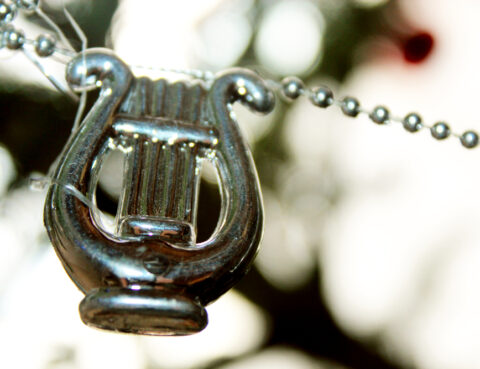
Spoiler alert– This may make you cry. I would advise against reading if you are still under the age of 35, your middle name is ‘merry’, or your Santa Claus is coming.
It’s the time of year again when I yearn for the most melancholy music I can find. As I’m writing this, I’m listening to some achingly beautiful choral music that seems to be the perfect playground to some sadness deep within that I didn’t even know existed and I certainly have no words for. I can sense that it is truly my sadness that is surfacing, not just borrowed emotion from the music I am listening to, but I cannot tell you from where it originates.
This mood certainly seems somewhat incongruous with the emotional expectations of the season. Isn’t this supposed to be a season of joy, happiness and fulfillment? Our greetings at this time of year certainly reveal our emotional agenda – Merry Christmas, Happy Holidays, Happy Hanukkah, Happy New Year. However, it’s likely that we wouldn’t be wishing this for each other unless the opposite was more likely to be the case … and for good reason it would seem.
We have come to associate this season with warm family connection, a generosity of spirit, magic and awe, feasting and fulfillment. Our hopes and expectations automatically highlight any lack there may be. With years, these losses accumulate. Warm childhood memories of celebration and connectedness are not easily re-enacted and when they are, the magic is often missing. The empty spaces on our attachment dance cards become more obvious when the dancing is supposed to happen. Early childhood lacks and losses tend to become more obvious with time, not less. Winter itself becomes symbolic of lack – lack of warmth, lack of thriving, lack of life itself. The holes in our attachment world are never more revealed than when fullness is the hope and expectation. For these reasons alone, there would need to be space for sadness in our life during this ‘festive’ time.
But there is another perhaps even more significant reason for sadness to be invited into our emotional landscape at this time of year. Before I elaborate, let me give a bit of context.
My most recent project has been developing a series of seminars for the staff of Sarah McLachlan’s School of Music for troubled kids. I am having the time of my life joining the dots on the story of music and emotion. Although there is a growing body of research on this topic, most of it is uninformed by the newest insights on attachment, emotion, and especially play. Hence my excitement to be in a place of discovery – among the first it seems to be looking through these lenses.
One of the insights I come to this study of music with is the idea that emotion is meant to take care of us, with sadness playing a pivotal role in our adaptation to life. Sadness is undoubtedly one of the most difficult, if not THE most difficult, of all human emotions – to experience as well as to express. A second foundational insight is the idea that play is meant to take care of emotion – helping emotion move, giving safe expression to emotion, and especially helping emotion to be felt. Now add to this a realization that music is the first language of emotion as well as the primordial and preeminent playground of emotion. This trilogy of understandings paves the way for a plethora of realizations and discoveries.
So why would we need sad music to begin our festive season? The answer is that with age, it becomes increasingly difficult for many of us to find the merriment in it all, to preserve the awe when the magic is gone, to be happy when tragedy surrounds us, to be upbeat in the midst of keen disillusionment and disappointment. Paradoxically, this is where sadness comes in.
One of the secret powers of sadness is its ability to spring us back into joy and happiness – like letting oneself go downhill on a ski-slope in preparation for making it sufficiently uphill to where you get on the ski-lift. Getting uphill emotionally can become increasingly challenging for some of us and we need all the downhill momentum we can muster to give us the boost we need.
Healthy emotional equilibrium is anything but equanimity. It involves riding the sine wave through the down turn in order to experience the subsequent lightening of mood. In fact, emotional bounce back becomes less and less possible without the prerequisite descent into sadness and melancholy. In other words, we must allow ourselves an immersion into sadness to preserve the ability to reach the happiness that we so desire. As paradoxical as it may seem, when we lose our emotional sparkle, it is melancholy that holds the answer to elevating our mood.
The problem with sadness is that it can be hidden in the deeper recesses of our heart without us even being aware of it. If sadness isn’t expressed in a timely manner, we tend to lose the memories and words that can give us a handle to our emotions. Therefore, it becomes less and less accessible in a usable form.
In other words, sadness does not have a long shelf-life. Emotions serve us best when fresh, when felt, when mixed and when reflected upon. Sadness can sour when past its best-before date. Stale sadness can suck the life out of our spirits, shrivel up our generosity, turn us into self-interested narcissists, drag us down, and even ironically fuel a desperate pursuit of happiness. All this gives sadness a bad name. The problem is not with the sadness however, but with the sadness that has become stale, stuck and sour.
Once we’ve lost a handle to our sadness, it is also more difficult to make room for these feelings. Sadness rarely feels justified, especially when we consider the suffering of others. But once sadness has been orphaned from the experienced futilities that gave rise to it, it becomes even more difficult to embrace, at least for those of us who must have a reason to feel.
So how are we to find this stale sadness, give it the expression it yearns for, help cleanse our heart of the impediments to healthy emotional circulation?
That is where music comes into play.
The right music is profoundly gifted at collecting any sadness that has been neglected or disconnected from its memories and its words. All indications are that music, of all the arts, holds the most promise for finding the orphaned sadness that needs to be released, giving it safe expression, and spring-loading it to, ultimately, elevate our spirits.
So bring on the winter songs in minor keys, the tragic stories ensorcelled by musical scores, the resonant cellos that tug at the heart strings, the unresolved tonal patterns that resist resolution until you almost can’t stand it anymore. This kind of music seems to transport sadness to an emotional heaven that seems undaunted by the ever-present futilities of life.
Most academic treatments of music can’t make sense of its affinity for sadness because sadness is synonymous with suffering: why would so much music seem to invite a state that is considered aversive? What these studies miss is that music, when in the play mode, invites our emotions to come out to play. True play is both engaging and containing, thus rendering the sadness not only bearable but even somewhat enticing.
Plato – the first play theorist ever – said it best: music brings a charm to sadness.I feel that truth. Like sugar makes the medicine go down. Adding a dose of playfulness and distancing it from reality is what does the trick. And once music carries the sadness and moves toward resolution, it somehow seems that the sadness will end when the music does.
To reiterate, sadness is pivotal to emotional health and music seems most suited to reach into the deepest recesses of our heart and coax this reticent inhibited sentiment out to play. Once the sadness is scored in melancholy tones over time, the sugar-coated suffering becomes almost irresistible – like sirens to sorrow. Sometimes I find myself surfing Spotify for just one more sad song before turning off the lights. Before I started studying about the interplay of music and emotion, I thought this to be an eccentric trait of mine. Now I see it much differently – as simply one manifestation of a healthy universal need to bring sadness into play.
I must confess that I don’t give nearly enough playtime for sadness in my everyday life throughout the year, to fuel the spontaneous bounce-back into the happiness that would more suit the season. Perhaps that is why my stores of sadness are so full by the beginning of December. I clearly need to shed a few pounds of sadness to prepare for the anticipated feasts of merriment just ahead.
So … if you are on the other side of mid-life, merry is not your permanent state of being, and Santa Claus’s existence is in doubt … it may be high time for some sad music.
‘Tis the season for sad music as it promises to be our best hope for delivering a most Merry Christmas, a truly Happy Hanukah, a restorative Happy Holiday, and even a Happy New Year. Try explaining that to your friends. Actually, don’t even try unless it makes some sense to you first.
To riff off of Plato for the valediction …
May music bring charm to your sadness,
Dr. Eeyore (aka, Gordon Neufeld, PhD)
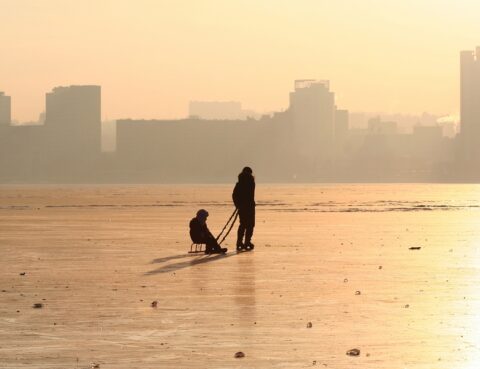
Being a parent is a hard job. It is fun and scary, obvious and mystifying, exhausting and exhilarating, heartwarming and heartbreaking, clear and confusing. There are no guaranteed outcomes. There are many highs and lows, and many tears along the way – both our children’s and our own.
We joke that kids should come with manuals to tell us how to guide their growing up and maturing into separate beings. Our kids joke that we ought to pass an exam before we are allowed to be parents. “It is a dance with us in the lead,” Dr. Neufeld says, but that is only at its most elegant. Sometimes it could be mistaken for theatre or even martial arts.
When she was four, one of my daughters was washing herself in the bathtub. She asked me if she was brown or white. Since her father is brown and I am white we had expected the question but never really sorted out what we would say. Suddenly caught out, I said, “Well, Honey, I guess you are kind of brown like your dad and kind of white like me.”
“Hmm,” she said, taking this in for a minute. Then, pointing to the rack by the tub, she asked, “But what colour face cloth am I, the brown one or the white one?”
Wrong answer, Mum. You just introduced your four-year-old to a way to separate herself from you. You did not point out a way you are the same, which is what you thought you were doing. Even though I realized my mistake, I repeated it over and over.
Throughout their high school years my daughters asked me in different ways about being women of colour in this world. What I can say now is that I was consistent in my answers … and I answered the wrong question every time.
I thought they were asking about the new feelings that come during the teen years: the feeling that everyone is staring at you or that your thoughts are so loud that people standing nearby can probably hear them. “We all feel different,” I told them. “Every one of us must figure out our own way of being, searching until we feel like we are okay. It is an uncomfortable journey for all of us, but no one is actually staring at us. In the end, we have family around us and we will be fine.”
All of that is true, but I know now that they were not talking about the hormonal and cognitive changes that lead teens to feel exposed and confused. Rather, they were asking me very practical questions about what it means to be women of colour in a society where white privilege is everywhere, ingrained and bolted into the world, both blatant and masked, around every corner we turn, and woven into the smallest of interactions. But even more importantly, they wanted to know if I saw that. They were asking me, their Mum, if I understood at a deep level who they are – women of colour, and very different from me in important ways. They wondered: how could I be close to them and really know them if I could not even see that?
That is the hard part about being a parent. Every one of my wrong decisions and wrong answers were given for good reasons, with love and due consideration. Unfortunately: love + due consideration ≠ right answer.
Life is messy. In spite of our best intentions and thoughtful actions we make mistakes. Often there is never a way to know which of our decisions was right and which was mistaken, what needs correcting and what doesn’t. There is no way to know what would have happened had we travelled down a different path at any given moment.
Parenting is not a world championship game with clean rules, referees to instantly interpret on-field actions, and a final score. It is our job to read how our responses land, to make amends when we see they are needed, to have a good cry when we aren’t sure what to do, and then, day in and day out over the many years, to try to align our actions with our heart’s yearnings for our children: for them to be both deeply connected and fully their own people. In other words, to help them reach their full human potential.
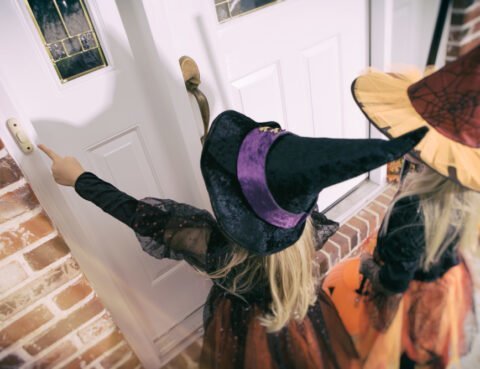
Last Fall, our three-year-old son Nathan’s favourite book was ”The Three Little Pigs.” Many afternoons were spent with Nathan pretending to be the piggy with the straw house while Emma, our five-year-old daughter, was the piggy with the wood house and Mom was the piggy with the brick house (the secure benchmark, the answer to worries). Dad played the big bad wolf. We replayed the story many times and while it evoked a lot of alarm in our children, it was evoked in play and was thus exploratory, expressive and imaginary…and lots of fun!
As Nathan was particularly drawn to playing with alarm, another activity he enjoyed around this time was going to the store to see the Halloween decorations. Although Emma was a bit afraid of the monster and witch costumes, Nathan never seemed ready to leave! The routine was always the same: to walk in front of a scary costume, to pretend to be afraid and then to flee into the next aisle. Like the piggy play described above, this was another playful context that allowed our children to develop a relationship with their alarm; a chance to bring something a little bit scary into the safe world of play.
Recently, however, Nathan is feeling less playful about his fears; the intensity of feeling afraid has increased. He often asks us if there are (big bad) wolves close to our house and he tries to reassure himself by asserting that our house is made of brick and that we have no chimney. He does not want to play alone in the basement or go to the bathroom if the light is off. This year, the kids were very excited to visit a new Halloween store but when we arrived at the store Nathan clung to us and was completely seized by the alarm; this was a very different experience than last year’s playful time in the Halloween store.
Before now Nathan rarely showed signs of fear. Adults often associate the absence of fear with the presence of courage; we often had people tell us that Nathan is not afraid of anything and that he is very brave. In fact, Nathan is not a brave child, he was simply not at a point in his development where he could fully feel fear. Certainly, he was moved by the alarm but it was not fully transposed into a feeling of fear. Now, however, because he is able to fully feel his fear, he is afraid of many things.
Halloween is coming in a few days. When it’s time to go out and knock on our neighbors’ doors, we expect that Nathan will be very excited at first, however it is very likely that fear will come when he finds himself in the dark surrounded by ghosts and witches. When that happens, he will probably insist on going home and it will be impossible to convince him to do otherwise. And so, like with many families with four-year-olds, the candy harvest may not be a success this year. Our priority as parents will be to normalize the situation and ensure that the evening ends in a context of secure connection where the alarm can safely come out.
Courage requires the ability to mix two feelings: desire and fear. In order to be “brave” on Halloween night, and to continue with trick-or-treating, Nathan would need to be able to mix his fear of Halloween decorations with his desire to receive candy. The ability to mix feelings is not present until five years of age, at the earliest; Nathan is simply not there yet.
So this year we will simply appreciate the fact that Nathan is able to express, name and feel fully his fears. We will wait patiently for the season of courage to arrive, which one day (maybe even next Halloween!) will allow him to tame his fear in service of his desire for candy!
We wish you all a Happy Halloween!

Anytime I am working with the parents of adolescents, I am always excited to share insight about the pivotal concept of “counterwill” in the context of healthy development. Understanding this concept can make a tremendous difference in understanding our teenagers, especially when we feel confused or worried about their tendency to push back. First coined at the turn of the century by Viennese psychoanalyst Dr. Otto Rank , this concept has been further developed and refined by Dr. Gordon Neufeld. Simply put, counterwill is our instinctive reaction to resist, oppose, or push back when we experience a feeling of force or coercion greater than our ability to manage it, and greater than our desire to cooperate or comply. The counterwill instinct does not surface because we seek to be difficult or decide to be contrary (although it can result in these outcomes), rather it is an innate defensive reaction with a very specific protective and developmental purpose.
Counterwill tends to be more pronounced and chronic in adolescence (and in toddlerhood!) and, without insight, it can cause strain on the parent-teen relationship. The purpose of counterwill is to serve maturation; adolescent counterwill helps to deliver an adolescent to individuation by pushing back the thoughts, agendas, demands, and wills of others to make space for the teen’s own thinking, ideas, and opinions. (2). Through counterwill, the pushing out of the influence of others, nature is trying to provide a cocoon-like space for the adolescent to develop their own mind. Counterwill exists even, and perhaps sometimes especially, in relationship with parents, teachers, and those the teenager is closest to as nature is trying to assist the adolescent to grow the self as separate from parent(s) and in a truly healthy context, separate from peers, too (3). Counterwill is serving to prime the transition to adulthood, even while it accounts for a significant amount of the turbulence involved in the process.
So what does this mean in real terms? We say “black” and the teenager will say “white.” We say “white” and the teenager will say “black.” This can be a highly confusing and frustrating time when we suddenly feel like our child now seems to think that we know nothing, that we are “out of date”, and that our suggestions and ideas are irrelevant. We can feel shut out when we try to connect, correct, teach, and parent. This can be a challenging dynamic in the relationship, but when we understand that counterwill has an important purpose, we can more gracefully weather the temporary storm.
What can make this “counterwill storm” worse is when, lacking insight, we take this pushback personally, experience our own hurt feelings defensively, and react with increased force and authority, push more, or deliver our expectations in a language of coercion and ultimatum. Guess what happens next? We provoke increased counterwill at a time when the teenager is already swimming in it, perhaps now starting to drown.
In her excellent editorial on the Neufeld Institute website titled: The Surprising Secret Behind Kids’ Resistance and Opposition, Dr. Deborah MacNamara encourages parents to “… anticipate resistance and not to take it personally.” She reminds us of the practices that can diffuse the intensity of counterwill, such as focusing on connection in the difficult moments, reducing coercion, pressing “pause” in that moment rather than charging ahead, making room for the teenager’s own ideas and thoughts, and always making amends when things have gone sideways, so that the relationship remains the priority.
Counterwill in our teens can really lead us down the garden trail and it often does…until we see it in context of healthy development and begin to work with it in a way that gives it some needed room to fulfill its developmental purpose.
Dr. Neufeld’s course, Making Sense of Counterwill, is being offered as a Scheduled Online Class led by Neufeld adjunct faculty member, Colleen Drobot. Classes start October 23, 2019. Click HERE for more information.

